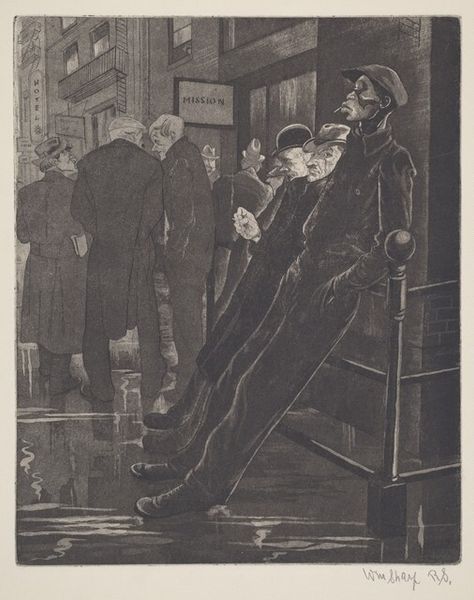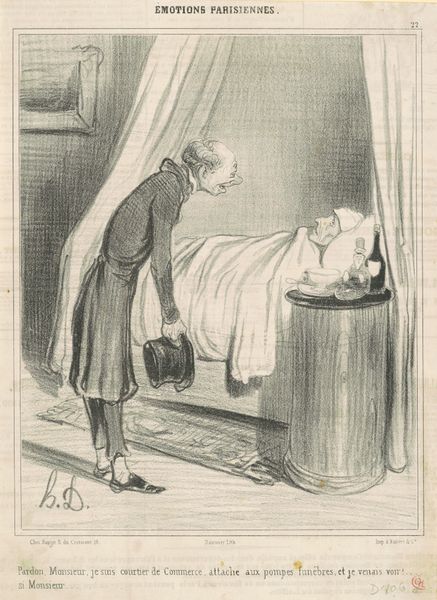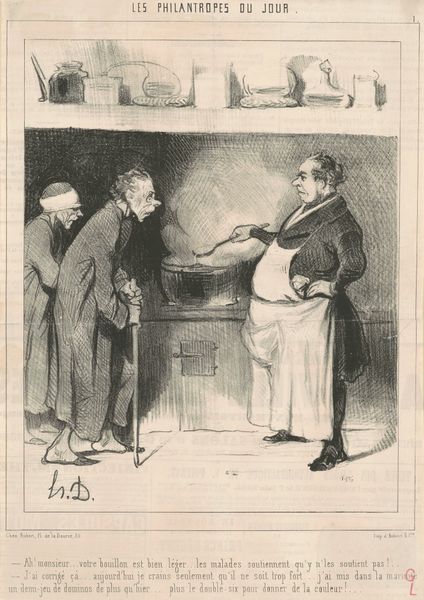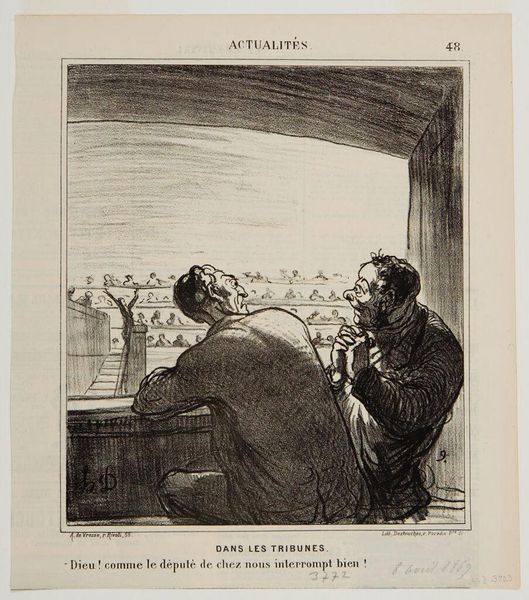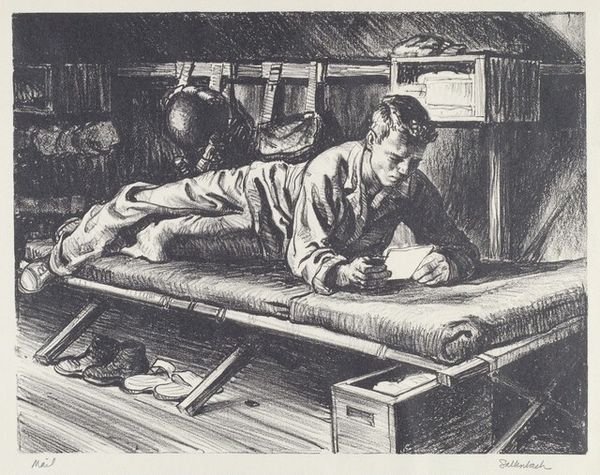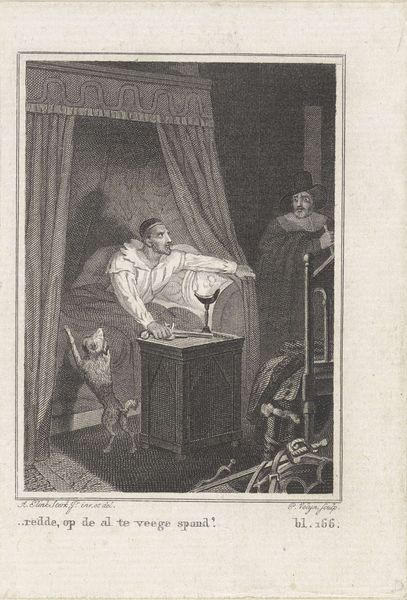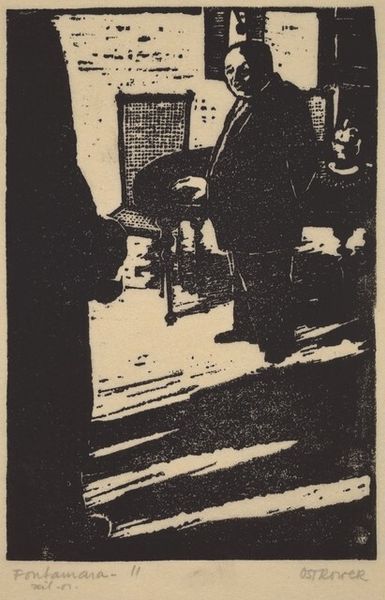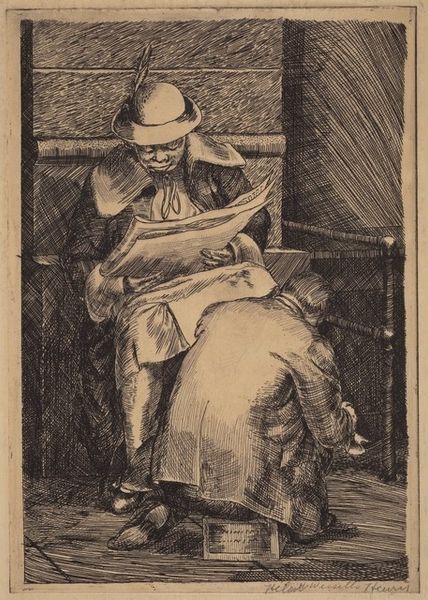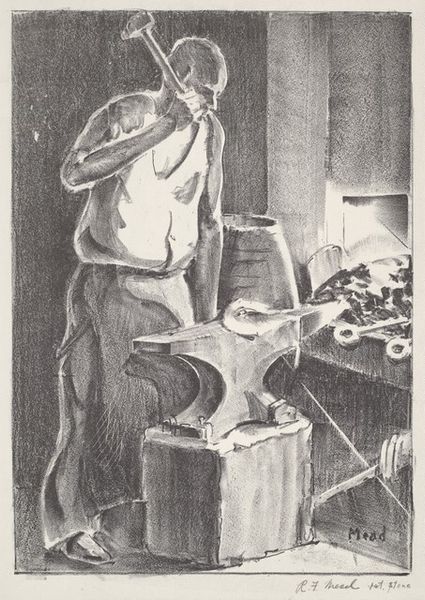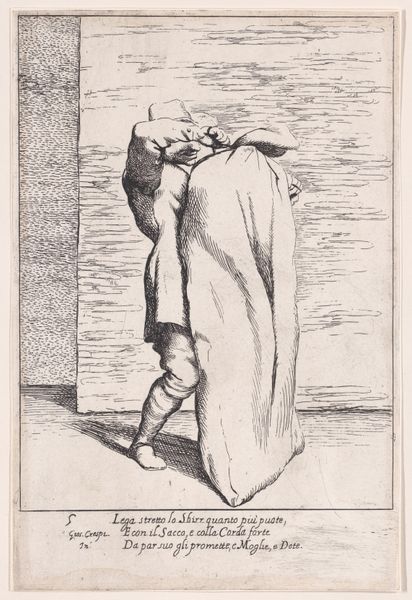
drawing, print, pencil, charcoal
#
pencil drawn
#
drawing
# print
#
pencil sketch
#
charcoal drawing
#
figuration
#
pencil drawing
#
pencil
#
portrait drawing
#
genre-painting
#
charcoal
#
modernism
#
realism
Dimensions: image: 233 x 200 mm sheet: 322 x 244 mm
Copyright: National Gallery of Art: CC0 1.0
Curator: Ah, there’s something deeply poignant in Charles Wheeler Locke’s "The Barber Shop," created around 1940. The piece seems to breathe with a quiet, almost mournful, contemplation. Editor: The tonality, executed primarily in pencil or charcoal, immediately establishes a mood of hushed intensity. Observe the strong chiaroscuro effects. The sharp contrast almost traps the subjects in the very act of having their faces transformed. Curator: It really does feel suspended in time, doesn't it? Like a memory surfacing. For me, the focus isn’t so much on the technique itself, even though the draughtsmanship is impeccable, but more on the human story. The vulnerable tilt of the client’s head, the barber's focused gaze—it’s a real tableau of trust and vulnerability, all playing out in that intensely rendered interior. Editor: Precisely, it’s that balance and the compositional framework that commands the viewer’s attention. It’s more than just Realism; Locke infuses Modernist sensibilities within, distilling and exaggerating details to achieve a visual and emotional punch, one built through sharp lines. Even a portrait drawing possesses dynamic tension with its interplay of forms and spaces. Curator: I find myself wondering, though, about the unwritten narrative. The man in the chair—what’s on his mind? What burdens or aspirations does he carry? Locke invites us into that space of reflection. We become witnesses to a private ritual made public through art. It's as if Locke isn’t just capturing an image, but the very essence of an encounter. It feels very intimate, and even spiritual, almost. Editor: Well, viewed through the lens of semiotics, the shaving implements represent more than mere grooming; they are the instruments by which identity is constructed, challenged, or even erased. Look closely how even a mundane occurrence takes on layered meanings when processed into art. Curator: It is wonderful how it is never simply what it seems. After really studying Locke’s artwork with you, it definitely highlights not only skill, but narrative as well. The piece feels alive and pulsing now, I think, with possibilities, open to infinite readings. Editor: Exactly, and it underlines how crucial looking intently—and with purpose and multiple frameworks—can fundamentally shape your whole perception and the true message from the creator’s view, of the core essence of the art.
Comments
No comments
Be the first to comment and join the conversation on the ultimate creative platform.
